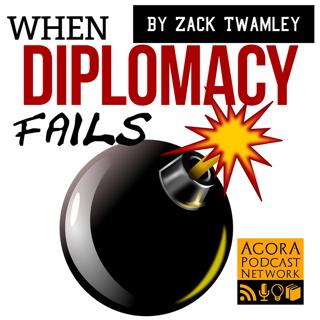Jaksokuvaus
NEW: Subscribe to WDF's newsletter for a weekly update on the latest in WDF, exclusive deals, stories, quizzes, perspectives and so much more that you won't get anywhere else. Cut through the cr@p and AXXESS the history with our weekly telegram service. Simply click on the link provided and add your email, and WALLAH!Link: https://mailchi.mp/a0d49eec863c/wdfpodcastEpisode 17: The Balancing Act contains several fascinating nuggets, as the US did its best to balance the needs of its policy towards South Korea - the luring of its enemies there into a false sense of security by making the regime vulnerable - with its real strategic concerns if the North made use of its increasingly powerful armoured columns. In spite of Syngman Rhee's pleas in the months before, the anti-tank capabilities of the ROK Army were insufficient at best, and there was a real danger that if the North pushed south with its abundance of T34s, it would roll up everything that the allies had to offer.In such circumstances, we are also introduced to War Plan SL-17, a detailed dossier on how to act in the event of a war in Korea, developed by the US government in early June 1950, in other words, only a few weeks before the invasion was launched. This War Plan also detailed the defence in the Pusan Perimeter which was later made famous by heroic allied actions, but also "an amphibious landing at Inchon to cut enemy supply lines". Far from General MacArthur's brainchild, the Inchon landings were in fact put to paper many months before, all as a response to the fears that the North was capable of defeating the allies on the peninsula before the wider goal of NSC68 could be pursued.This is our final analysis of American policies towards Korea before the shooting begins, and it is rife with some last minute considerations, as war preparations in late June 1950 reach a fever pitch. Having crafted and prepared this policy, it was essential that Washington not mess up this late in the game - the risk was high, but the endgoal of containment required that Korea be a theatre of risk. If the allies could stand fast in the initial attack, then the subsequent response would hopefully cover up any bad taste that the initial allied failures left. Hopes and aims were thus a dime a dozen in the final days of peace; it remained to be seen exactly how secure the American position was. A succession of punches, some of them in the public sphere, some on the battlefield, and some in the upper echelons of government and military command, were soon to land, and then, a new balancing act would begin.*******"Good Morning Mr Zip-Zip-Zip", by Eugene Buckley and the Peerless Quartet, released in 1918. The song refers plainly to the composition and haircuts of the armies. In light of what's about to come in Korea, I felt it was appropriate! You can get it for free here: http://freemusicarchive.org/music/Eugene_Buckley_and_Peerless_Quartette/Antique_Phonograph_Music_Program_03242015/Good_Morning_Mr_Zip-ZipZip_-_Eugene_Buckley_and_Peerless_Quartette************ Want to grab yourself some quality, stylish head/ear phones and get 15% off? Use the code WDF to avail of this special offer and start your listening journey with When Diplomacy Fails like never before! See: https://www.sudio.com/eu/Want to support this podcast in other ways, as we meander through the Korean War? Check out the following links to our social media, shop, website, source materials and Patreon below.Official shop where you can pick up all manner of podcast-related goodies: http://www.wdfpodcast.com/shop/Facebook page: Get bonus content on Patreon Hosted on Acast. See acast.com/privacy for more information.

